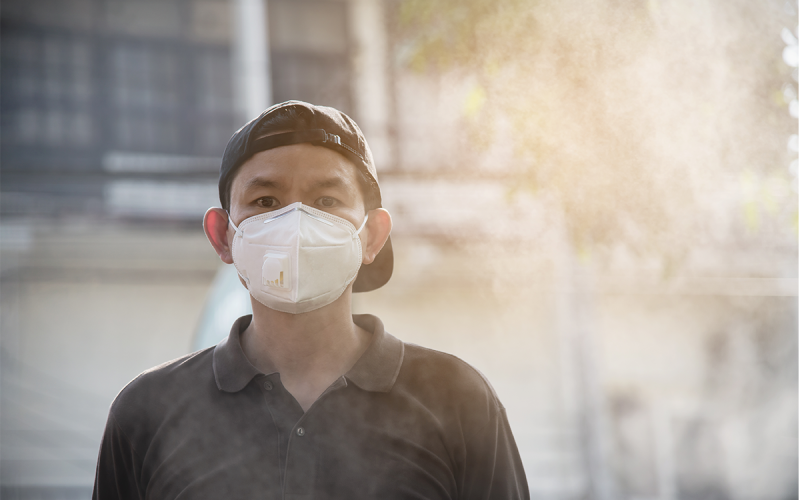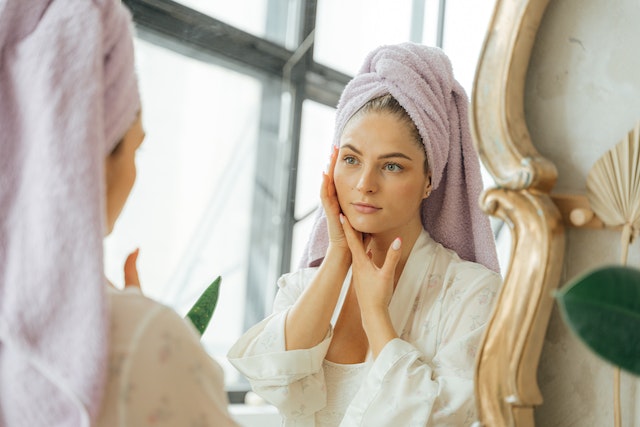Introduction
Every day, we breathe in a mixture of gases and tiny particles that make up air pollution. While its effects on lungs and heart get much attention, there’s another vital organ under attack: your skin. As the largest and outermost barrier, skin faces the brunt of smog, smoke, and dust. This constant exposure can lead to dryness, irritation, breakouts, and even premature aging. In this article, we’ll explore the impact of air pollution on skin, explain the science behind the damage, and share simple, skin pollution protection tips to help you defend your skin effectively.
What Is Air Pollution?
Air pollution consists of harmful substances in the atmosphere, such as:
- Particulate Matter (PM2.5 and PM10): Tiny particles from vehicles, industry, and wildfires.
- Nitrogen Dioxide (NO₂): Emitted by cars and power plants.
- Ozone (O₃): A component of smog formed when sunlight reacts with other pollutants.
- Volatile Organic Compounds (VOCs): Chemicals from paints, cleaners, and plastics.
These pollutants vary by location and season but share one thing in common: the ability to harm human health—and the skin is no exception.
How Air Pollution Damages the Skin
Oxidative Stress and Free Radicals
Pollutants generate free radicals—unstable molecules that damage cells. On skin, this leads to:
- DNA Damage: Increases risk of uneven pigment and even skin cancer.
- Collagen Breakdown: Causes loss of elasticity and early wrinkles.
Inflammation and Irritation
Fine particles penetrate pores and trigger an immune response. Symptoms include:
- Redness and Itching: Common in sensitive skin.
- Eczema Flares: Pollution can worsen chronic skin conditions.
Barrier Disruption
Airborne particles weaken the skin’s natural barrier by depleting key lipids and proteins, resulting in:
- Moisture Loss: Dryness, flakiness, and tightness.
- Increased Penetration of Pollutants: Vicious cycle of further damage.
Accelerated Aging (“Pollu-AGING”)
Studies show long-term exposure to polluted air correlates with:
- Fine Lines & Wrinkles: Premature creasing, especially around eyes and mouth.
- Hyperpigmentation: Uneven dark spots and dull complexion.
Acne and Breakouts
Smog and soot mix with sweat and sebum to clog pores. The result?
- Blackheads & Whiteheads
- Inflamed Acne Lesions
Signs Your Skin Needs Pollution Defense
Look out for:
- Dullness: Lack of the natural glow.
- Uneven Texture: Rough patches or enlarged pores.
- Persistent Dryness: Even with moisturizers.
- Frequent Breakouts: Especially in your T-zone.
- Red or Irritated Areas: That flare after being outdoors.
If your skin shows one or more of these signs, it’s time to boost your skin pollution protection routine.
Essential Skincare Strategies to Defend Your Skin
Gentle Cleansing
- Double Cleanse: Start with an oil-based cleanser to dissolve makeup and sebum, then follow with a gentle foaming or cream cleanser to remove remaining pollutants.
- Avoid Harsh Soaps: They strip natural oils, worsening barrier damage.
Antioxidant Power
Antioxidants neutralize free radicals on your skin’s surface:
- Vitamin C (Ascorbic Acid): Brightens skin and stimulates collagen production.
- Vitamin E (Tocopherol): Strengthens barrier and soothes irritation.
- Niacinamide (Vitamin B3): Reduces inflammation and regulates oil.
- Green Tea Extract: Calms redness and fights oxidative stress.
Apply antioxidant serums in the morning before sunscreen to form a protective layer.
Reinforcing the Skin Barrier
- Ceramides: Key lipids that hold skin cells together. Look for cleansers and moisturizers with ceramides, cholesterol, and fatty acids.
- Hyaluronic Acid: Hydrates and plumps, reducing the appearance of lines.
- Occlusives: Ingredients like shea butter or squalane that lock in moisture overnight.
A strong barrier keeps out pollutants and retains hydration.
Sun Protection
Pollution and UV rays together accelerate aging more than either alone.
- Broad-Spectrum SPF 30+: Deflects UVA and UVB rays.
- Physical Sunscreens (Zinc Oxide, Titanium Dioxide): Landing on the skin’s surface to reflect light and pollutants alike.
- Reapplication: Every two hours or after sweating.
Deep Cleansing and Exfoliation
- Gentle Chemical Exfoliants: AHAs (glycolic, lactic) or BHAs (salicylic) help unclog pores without harsh scrubbing.
- Clay Masks: Draw out impurities and absorb excess oil. Use once or twice weekly to remove embedded particles.
Lifestyle Habits for Pollution Defense
Indoor Air Quality
- Air Purifiers: Look for HEPA filters to remove fine particles from your home.
- Houseplants: Spider plants and peace lilies can help reduce indoor VOCs.
- Ventilation: Open windows when outdoor air quality is better, or use exhaust fans when cooking.
Diet and Hydration
- Antioxidant-Rich Foods: Berries, leafy greens, nuts, and seeds help fight internal free radicals.
- Omega-3 Fatty Acids: Found in fish or flaxseeds, they reduce inflammation and support barrier health.
- Plenty of Water: Hydrates skin cells and helps flush toxins.
Stress Management
High stress levels worsen inflammation and barrier damage. Combat stress with:
- Mindful Breathing or Meditation
- Regular Exercise
- Adequate Sleep
The Silent Threat: Air Pollution
While we often hear about the respiratory and environmental consequences of air pollution, its impact on the skin remains a well-kept secret. The truth is, the air we breathe can silently deteriorate our skin’s health, causing a host of issues.
Air Pollution and Your Skin
Hidden Aggressor
Air pollution, filled with tiny particles and toxins, settles on your skin daily. Over time, this can lead to inflammation, premature aging, and skin conditions like acne and eczema.
Skin Barrier Breach
Air pollutants can disrupt your skin’s natural barrier, allowing irritants to penetrate more easily. This can result in redness, sensitivity, and a compromised defense against environmental threats.
Free Radical Damage
Pollutants generate free radicals, which accelerate the aging process, causing fine lines, wrinkles, and uneven skin tone.
Protecting Your Skin Barrier
Daily Defense Routine
Maintaining a strong skin barrier is crucial. Here’s how to protect it:
- Cleansing: Use a gentle cleanser to remove pollutants and toxins. Double cleansing can be beneficial if you live in a highly polluted area.
- Antioxidants: Apply antioxidant-rich serums to combat free radicals. Vitamin C and E are excellent choices.
- Moisturize: Keep your skin hydrated with a suitable moisturizer to fortify the barrier.
- Sunscreen: Sunscreen acts as a shield, guarding against UV radiation and further pollution damage.
Detoxifying Masks
Regular detoxifying face masks can help draw out impurities and refresh your skin. Opt for masks containing ingredients like activated charcoal or clay.
Holistic Wellness
A balanced diet, adequate hydration, and stress management all contribute to skin health. A holistic approach is key.
Conclusion: A Healthy Skin Barrier
Dr. Mark Hyman’s expertise in dermatology unveils the hidden consequences of air pollution on your skin. It’s time to take action and protect your skin barrier from the daily assault of pollutants.
Incorporate the expert tips and a dedicated skincare routine into your life, and you’ll have a healthier, more resilient skin barrier. Don’t let air pollution jeopardize your skin’s well-being. Your skin is your first line of defense – safeguard it with care.










